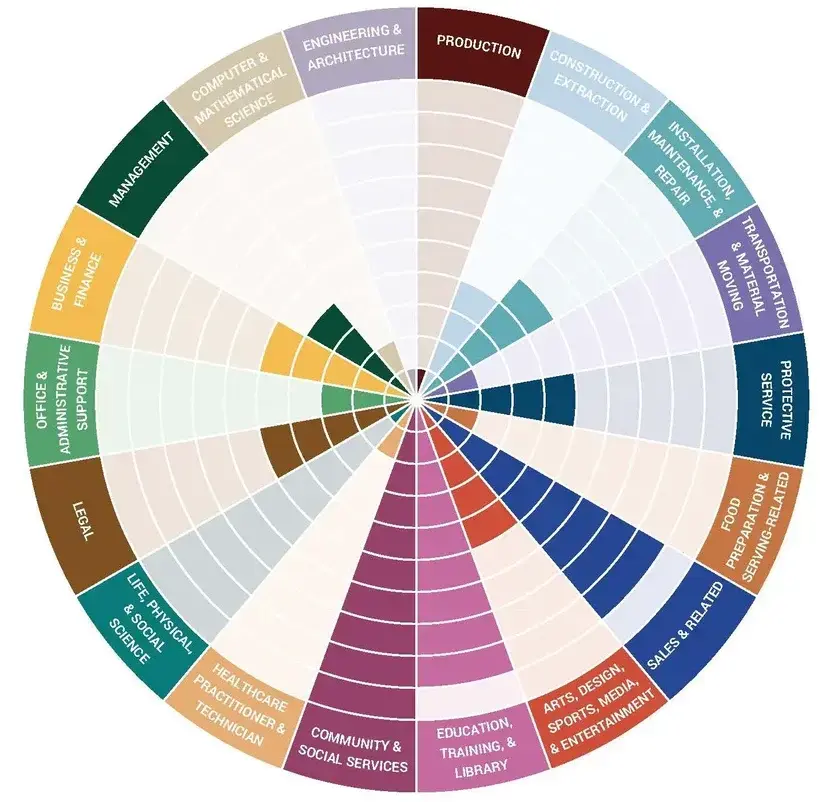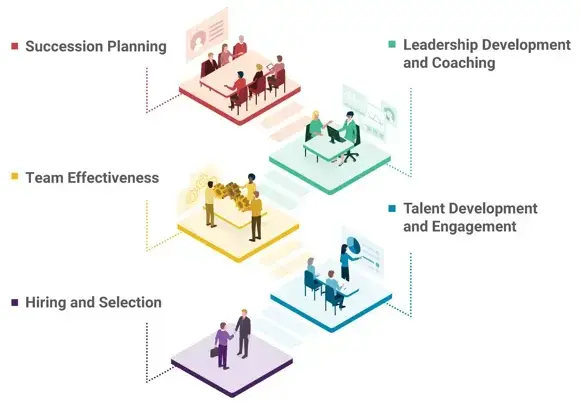For this final installment of some of the ideas I wanted to share with you, we'll review the last two Components, Restlessness and Thought, and finish this 4-part series with our Career Management section.
Page 24:
For many years, Restlessness was called the Need for Change; however, it was my father's original word when creating The Birkman Method. This Component is a way to measure how intensely we desire a predictably focused or a consistently variable environment.
Those of us who dwell on the higher end of this spectrum embrace days that offer a wider variety of different activities. The group who lived on the low end preferred to concentrate on a consistent project or task for longer periods of time. As another 1 to 99 spectrum, we expect people at the low ends to be more comfortable with a predictable and consistent work environment free from too many interruptions. Software developers, coders, and accountants relish their uninterrupted time, and indeed their ability to stay more focused is understood as part of their quality control and accuracy. They do not struggle to stay "glued to the chair" as much as their higher Restlessness colleagues.
High Need Restlessness, once on task, don't necessarily love being interrupted; however, they don't seem to mind it as much as the lower Restlessness types. They are often seen as very "open" and receptive to stimuli. In fact, sometimes they can be so open that they end up chasing the latest, greatest shiny object since they find it fairly easy to shift their focus throughout the day. It is good to remember that many positions, including sales, benefit from a comfort level with moving quickly from one assignment to another.
As with all Birkman Components, there are pluses and minuses that come with us anywhere we reside on the spectrum. We really want people to appreciate that whether it is high numbers or low numbers the person has, their strengths can add equal value to the team. I remind my dialogue partner that what matters is whether they are applied in the best context and kept under control. It's up to those of us who work with others and manage our teams to ensure each employee is placed in the optimal role or setting where their Birkman traits are shown to best advantage.
Page 25:
Thought describes your decision-making process and concern for consequences in making the right decisions. In the earliest days of my father's research, when he was a young IO psychologist interviewing all kinds of people in the workplace of the 1950s, he called this trait "Anxiety," and then later, "Indecision." Some years after that, we wanted a more general term with a positive tone that did not apply only to the high end of the Thought spectrum.
Anxiety might apply if a very high Thought individual lands in Stress, and in fact, those with high numbers are more likely to worry overmuch. Still, once again, there are notable strengths associated with scores all across the 1 to 99 spectrum. In our Birkman reporting, we can address how both Usual Behavior and Needs work in tandem, whatever the number or combination of scores.
Note: For many people, a high Physical Energy Usual score typically coincides with a lower Thought Usual score and vice versa.
Those who hover around the low end of the spectrum don't struggle to make decisions. They see most issues as being either black or white, so what's to debate? Whereas the folks who see ambiguity and inhabit the highest numbers on the Thought spectrum will be tempted to ponder a thousand shades of gray. They want to ensure that plenty of due diligence has been done before they leap into any decision. It doesn't require much imagination to see that excessive worry over arriving at a decision can result in paralysis-analysis or getting so stuck they may risk missing an opportunity. Clearly, both have their power and value and make another good reason we so desperately need one another as governors and counterbalances when we're working or living together.
TIP: Throughout the conversation, feel free to pause and ask questions about whether the person agrees with their statements or resonates in any way with what they are seeing and hearing from you. We always emphasize that the Birkman professional's role is not to "read the tea leaves" for them but rather to hear their partner's specific story and help them connect the dots between the Birkman data and their own unique and "unrepeatable" selves.
Pages 27:
TIP: This can be an opportune time to remind your conversation partner that Birkman is unique among assessments in its ability to combine both occupational and relational data. Said another way, we're able to offer both interpersonal and career reporting in one assessment (and most respondents complete their Birkman in about half an hour).
Exploring career possibilities kicks off with a brightly colored wheel that features job family titles taken directly from the United States Department of Labor's website. It's the Occupational Outlook site sponsored by the U.S. government and referred to as the O*Net. While Birkman did not create these job categories, we based our years of career research on these well-established job categories and descriptions. It is important to let your partner know that each job family contains many kinds of jobs. We derived their intensity of "fit," which can be seen on page 28, by matching their responses to each item (question) on our questionnaire to the responses of people who had tenure or job satisfaction in those areas. Our research team was able to validate 22 job families for our reporting. Four of these do not appear on the wheel because they are trade or skills-based careers that don't mandate formal or academic education. What is shown on the wheel are the 18 career categories that constitute a multitude of professional careers.

On page 29, we include the six career matches from this list that most closely correspond to the way the individual has responded to our Birkman questions. Typically, this is where I remind my partner that these career areas contain a multitude of different careers in each of the six categories. It is safe to tell the person that they could likely find job satisfaction and engagement in any of the possibilities on this page.
I find this portion of the report interesting for anyone looking for a career change or career transition. For business owners, it is a useful way to consider career-pathing for an employee or for a student, an invaluable resource to either affirm or confirm their career direction or, in some cases, introduce a career option they may have never considered.
Page 31:
I must confess that I mostly point out their action plan and leave it to the individual to fill it out. In companies, this can be done with their supervisor, but since that is not my role, I usually just wrap up at this point. If time permits, I ask here if they have further questions or anything else they'd like to discuss.

CONCLUSION: By this time, you and your Birkman conversation partner will have filled at least one good hour with enlightening dialogue, and hopefully, by now, both of you are experiencing a true sense of accomplishment: excited about the discoveries you've made together and probably a little tired in a very good way!
I hope you've found this four-part series on tips for having a Birkman conversation to be useful. We're pleased that the Signature Report can be used at each stage of your organization's career and life cycle and can be utilized in any area of your practice to empower both team and individual performance.

